
Serapis1779
-
Posts
20 -
Joined
-
Last visited
Content Type
Profiles
Forums
Gallery
Events
Posts posted by Serapis1779
-
-
24 minutes ago, Serapis1779 said:
I had painted another full sized model of this same ship, airbrushing, brushing, and mixing paint. It looks "just" ok to me. See picture below of the painted hull
On this model, a scratch built mid-section, I first bought some stain (Minwax) and tested it on some scraps. Not good, and messy. I also tried a black sharpie (not too bad), but then I began opening my mind to creative, unorthodox, and unusual. I used to sell shoes and got familiar with polishes, which are a mixture of wax and oil. The key thing is the stain penetrates. So my first test was on a little square of basswood sanded smooth. The black needed the assist of Kiwi black leather dye to penetrate as a base, then black polish application. After it dried, I rubbed it with a paper towel, then cloth. It took just one more coat of polish, applied in the same way, and when I rubbed it I got this effect. The area below the wale has had Kiwi black leather dye applied but not the shoe polish. That will come next.
This technique which I am going to continue experimenting with seems promising. And the color "stains" are easy and inexpensive to acquire.
24 minutes ago, Serapis1779 said: -
- Ryland Craze and Canute
-
 2
2
-
6 hours ago, JerseyCity Frankie said:
I saw a fantastic plank on frame model at Joint Clubs in Connecticut one year, jet black whales which I thought were mahogany but the builder told me it was black shoe polish. Looked better than paint. Absolutely convincing, a deep measureless black with no brushmarks.
I had painted another full sized model of this same ship, airbrushing, brushing, and mixing paint. It looks "just" ok to me.
On this model, I bought some stain (Minwax) and tested it on some scraps. Not good, and messy. I also tried a black sharpie (not too bad), and then I began opening my mind to unorthodox and unusual. I used to seek shoes and got familiar with polishes, which are a mixture of wax and oil. The key thing is the stain penetrates. So my first test was on a little square of basswood sanded smooth. The black needed the assist of Kiwi black leather dye to penetrate as a base, then black polish. After it dried, I rubbed it with a paper towel, then cloth. It took just one more coat of polish the same way, and the when I rubbed it I got this effect. The area below the wale has had leather dye applied but not the shoe polish. That will come next.
- mtaylor, Ryland Craze and Canute
-
 3
3
-
On 11/8/2018 at 6:25 AM, Canute said:
How aare you blending them? melting or manual stirring?
I manually mixed them with my fingers. A little goes quite a ways.
I also use Meltonian shoe cream. It is available in many colors. Light brown for example makes a good ochre color that trends towards yellow on light colored wood.
-
After much thought I have begun using shoe polish to stain wood where appropriate.
The advantages are that it looks good. It is not messy. The final sheen is perfect in my opinion.
I needed yellow ochre. This color and hue varies a lot. In period paintings it ranges from orange-ish, pumpkin, to yellow-ish.
I use Kiwi Brown and Kiwi Tan and mix them to get the desired color, tint, and hue. This is mixing in progress.
The black wood on the cross section is Kiwi Black applied over an initial Kiwi Black leather Dye. Once the polish is applied and dried, I rub it with cloth, paper, or q-tip and a certain level of soft, smooth, luster emerges, much like that on polished shoes.
-
2 hours ago, mtaylor said:
Hi Mark,
I do hope you'll start a build log of your Serapis. I vaguely remember that kit and I think I might have built it as kid. Too many years, too many miles to remember, alas.
I fully intend to share a build log.
I have been taking photos at regular intervals, and making notes. I plan and hope to share them at regular intervals when there is enough to show, and not be followed by a months long interval.
-
Sometimes it is hard to fathom.
My name is Mark. I sign on as Serapis 1779, because it is that old Aeropiccola kit of HMS Serapis that motivated me to attempt building in wood, almost 40 years ago.
As a young adult and kid I built all kinds of plastic models, mainly because that was what was most easily avaible and obtainable. Back in those days there were hobby shops everywhere.
I describe myself as a newcomer to this group, but I just checked my profile and see that I joined in 2013. Five years have passed since then, but I resumed work on Serapis, which I bought in 1989, and didn't begin until 1997 or so and have worked on sporadically for 20 year
It was not until the first of April that I began working on it ever day. Steady progress is being made.
I guess I had a lot of irons in the fire; other similar hobbies, priority projects, adult responsibilities, same as everyone.
As mentioned, I work on the Serapis every day, and visit the forum everyday.
I appreciate being part of this group and am grateful for all that it is possible to learn here.
-
15 hours ago, Jaager said:
Geoff,
You have made if you have access to Apple. It is excellent for about everything.
What I learned about harvesting Apple:
Get it into 1 or 2 inch thick billets, bark removed, and end grain areas sealed with
old paint, varnish, melted paraffin - something to block rapid water loss from
the cut ends of the bundle of straws that are what wood resembles -
as soon as you can. Apple has sugar in its sap, and if you do not get it dry soon enough,
fungus will destroy the wood.
I find 2 foot lengths to be as long as I need.
Your wooden boat group should have a bandsaw. That is a good way to get a log cutinto billets - that you sticker and dry.
Buy your own blades ( 3 tpi hook - 1/2" wide works well enough for this) for the bandsaw,
resawing wears out blades fairly quickly and Apple is fairly hard wood. Fix the logs to
a carrier plank to keep them from rocking or rolling during the cut
- 1/2" ply works - with brackets and screws 2x4 framing braces, 2" drywall screws,
and 1/2" pan head screws to fix the braces to the carrier work for me- . Two right angle flatsurfaces and the carrier is no longer needed.
If you have access to a kiln - use it.
I made my own kiln - house insulation foam (a foil surface inside) to make the box, 200-300 watts of incandescent
light bulbs for heat and computer ventilation fans to pull out the moisture. It is not
a true kiln, but if the wood is at a higher temp than a fungus likes, you win the race.
A theory of mine:
If I had access to a lot of Apple, for a large butt.- in my imagination, I see me cutting the trunk high up,
and using the chainsaw to made a vertical cut down the middle to cut the 4-5 feet still on the roots.
I can see that a kick back of a chainsaw at head level could be a bit dangerous,
Trying a similar rip cut on a log - I could never think of a safe and practical way to
secure the log. The wood loss to a chainsaw's kerf is painful to think about. But
there those who use a chainsaw to mill out planks. But the machines have the saw fixed in place
and the log doing the moving.
Anyway, you will appreciate having one flat surface if you can get one.
Thanks for this sourcing information.
-
14 hours ago, grsjax said:
Good advice. A make do alternative is a hot attic. Don't know what your weather is like there but if attics get hot then you can sticker the boards there and get some dry wood. Down side is you can't really control the moisture levels very well.
This is an interesting tip.
-
1 hour ago, alde said:
My understanding is that planks varied in length from about 20 feet to 24 feet. On my current build I'm making my planks 22 scale feet long.
Thank you. In 1:64 scale that would be within the parameters of what I am cutting. Of course I need to measure the rough stock precisely, but I think my 150×5×1.5 mm planks give me a little more length, with mm to spare.
-
I realize that this question cannot be answered with absolute uniformity, but I am curious how long you cut your planks for the outer layer of the hull.
Looking at photos it seems like many who are working in the common scales, 1:48/1:64/1:80 have planks that are about 6 inches in length, with the width about 3/8 inch and the thickness about 1/16 inch; close to 1 x 5 x 150mm.
Is this close to what some of you use?
-
19 hours ago, Jaager said:
Geoff,
Looking at the Wood Database for Australian domestic lumber
I would look at the following:
Tasmanian Myrtle, Myrtle Beech
Raspberry Jam
Lemon-Scented Gum, Lemon Eucalyptus
Kauri, Ancient Kauri
If you paint/copper some of the Gum species may be useful
course grain is not so bad if hidden.
Thank you very much. Everyone who is sharing their thoughts are providing me with useful information. The sum total is very helpful to me and also, hopefully, to others.
-
18 hours ago, Jaager said:
Your fellow members have the right stock. There is no golden choice. Lots of species will
do just fine.
The key factor is the look that you are after. Are you doing POF and showing the frames?
Will it be clear finished wood with the color pallet determined by species used?
The keel vs frames vs beams etc.- not much difference with POF- as far as what to use.
Planking - unobtrusive grain - some species bend more readily than others.
There is a cachet around using Ebony for black wales, but there are aniline wood dyes that can
turn many species black and still show grain effect.
The spars are a different matter. Unfortunately - the traditional species are tropical in source
and I think pretty much now protected = Lancewood, Degame, Pau Marfim and all but impossible
to source.
One way is to find a board with straight grain, from a closed pore, tight grain species like Hard Maple,
Beech, Birch and split out the pieces - so that the natural grown shape is straight. Over time, the wood will
"seek" its equilibrium state.
As far as all this goes, should you be considering POF as an engineering demo showing the innards -
I am thinking that this is a yacht cost situation - at your present experience level - if you have to ask........
Another factor - with POF - the frame timbers require a lot of stock - depending on the size of the vessel and
your choice of scale. 50% going to saw dust is probably on the low end. A 1:48 liner ( 74 or< ) could require
20 bf or more.
Thank you, thank you.
I am a newcomer.
I am working on my first wooden shipmodel: An Aeropiccola HMS Serapis. Its attributes, and, shortcomings are very apparent and widely known. It also has nice potential. I am pursuing that by building it first according to the plans and materials (mostly basswood) as much for practice and experience, and fun. Any, and all, mistakes I make on the first model will be lessons learned to build a much better quality second model of the same ship.
I have already begun building the second model, using the lines and design and plans to build it as a plank on frame admiralty style model. On this model I am using other wood, fine hardwoods.
I am also building a cross-section model of the same ship.
I have no concerns about cost or yacht cost. My main concern is my age (64) and finishing this long dormant project. I have built models all my life, just not in wood, so the technique of crafting in wood is the "new", experience for this newcomer. I'm really trying to rev up the learning curve.
I have a nice variety of well seasoned hard woods of most popular varieties for ship modeling.
- Canute, mtaylor and Seventynet
-
 3
3
-
On 8/10/2018 at 8:47 PM, grsjax said:
Any reasonably hard wood with a fine, straight grain can be used for most parts of a model. Best to pick out your own pieces if you can to get the best results. That said some woods are better for some purposes. For a general all around, low cost wood go with basswood. Poplar is also a low cost alternative that is a little harder than basswood. Not the best woods but pretty good. I like cherry for most purposes but it doesn't seem to be the best for steam bending. Apple and pear are good for just about anything. Black walnut is excellent if you can find good pieces with out wild grain or knots. Maple is good for the backbone of the model and decks but get wood with a fine grain, not the typical stuff you find at Home Depot. Boxwood is an excellent wood for everything especially carving but it is expensive. There are lots of woods that can be used in modeling and they don't have to be the ones found in kits or from wood suppliers. I find that aracantha, dogwood, gardenia, plum, lemon, lime and other woods I find available around here work just fine and are usually for free. You do have to season it and mill it yourself but it is easy to do with a little practice.
One last thing. Don't buy wood from sources in China. What they label as cherry, walnut or boxwood has only a passing kinship with the real stuff.
Thank you. A very good and informative answer. It covers almost everything I was wondering about.
Btw: I am scratch building a British Roebuck cross-section and have started with a keel a false keel, and keelson of oak. I will not use it for any other part of construction, but thought it would be fun to have a heart of oak in this model.
-
12 hours ago, Jaager said:
You do not supply your location. An answer to your question would depend on
where on the planet is your home. Also, I don't think of "best" as being an adequate criterion.
A contest is not really what would answer the question. "Excellent for" would be a more reliable goal.
I prefer closed pore species. No open pore species will scale in as attractive a way
as a closed pore one. That is the one negative mark against an otherwise beautiful
wood= Juglans nigra - Black Walnut - if you get an older tree - a very dark rich color
but it helps if you live in the eastern region of North America for a good price.
Other species of Walnut - not so much of a good choice- most seem to have a lesser
color and more visible pores as well as some being brittle.
I agree with Grsjax on his choices, although I seem to like Hard Maple as lot more.
The grain pattern depends on the plane of your resaw. You can get clear low contrast
or tiger or flame from the same board. It is hard and strong. He is fortunate in having
access to temperate fruit wood species in Hawaii. They are as good as it gets.
Oak either red or white are a hard strong wood - good for hull timbers and bracing or
planking as long as they are used where they can't be seen. Their pores are distracting.
Two species that do not get much attention, but seem like good choices = Rock Elm
( death on the edge of my cutting blades and very slow on my 3/4 hp band saw - seems a lot
harder than Hard Maple and that is hard. There are pores, but small ones.) and Honey Locust.
One species I do not like is Platanus occidentalis American Sycamore - color is close to
Hard Maple, but another name now is lace wood because of its busy pattern - it is close to
Black Cherry in hardness, but is brittle- splitting easily. I was unfortunate in not realizing
that the species that Underhill called Sycamore was actually a species of Maple that is
about 80% of the way to Hard Maple in its quality. I would have gotten more Hard Maple
and Black Cherry from the mill.
I live on the Kansas, Missouri border. I belong to a ship modeling club. Several of the members have large stocks of seasoned wood (pear, apple, walnut, maple etc.), which they generously offer.
My main question is would you use one type of wood throughout, or, would you use specific types of wood for masts, another for the keel, perhaps another type for planking.
-
I am a relative newcomer to the Forum and hope that this topic hasn't been discussed to death. In the time that I have been on the Forum, I have searched hundreds of threads, but have not seen this particular question discussed.
First, I have seen and appreciated all of the opinions about preferred woods, like boxwood, pear, apple and others. But some discussion about why, and discussions of preferred attributes would really be appreciated.
However, what I would like to get everyone's opinion on is this:
Are there preferred woods for
1. Keel and framing
2 Planking
3. Masts and yards
4. Decoration and ornamentation
5. Carriages and other structures
It is apparent that woods with natural colors are often used to highlight particular parts or sections as appropriate.
Especially important are opinions about what qualities certain woods have that make each type stand out in exception to another.
-
Seems I had to retire also, and that was five years ago. During that time, my basement working area nearly got unnavigable due to storage of personal stuff belonging to numerous family members. And there was another major hobby project that wound up higher on the list (large high rail Lionel train layout).
Finally, last summer, I shifted to back to ships, and finished off a couple of plastic galleons, I got as a gift. One they were out of the way I see resumed work on Serapis in late winter.
-
How is your Serapis coming a long. Would love to see new photos and hear about your progress.

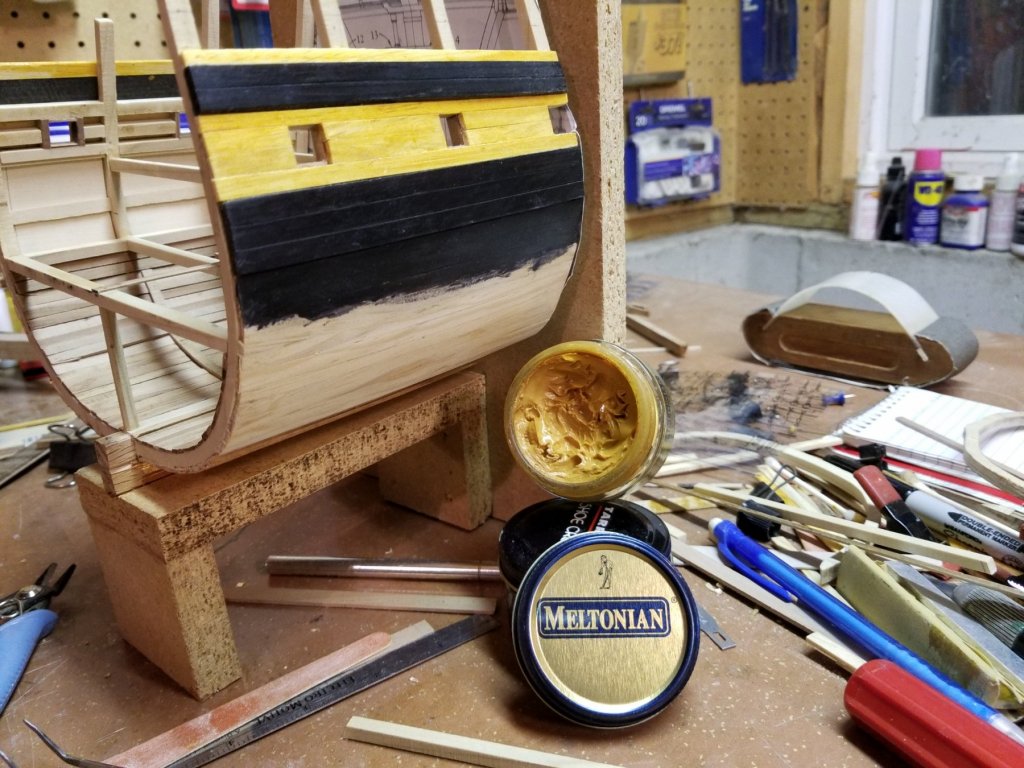
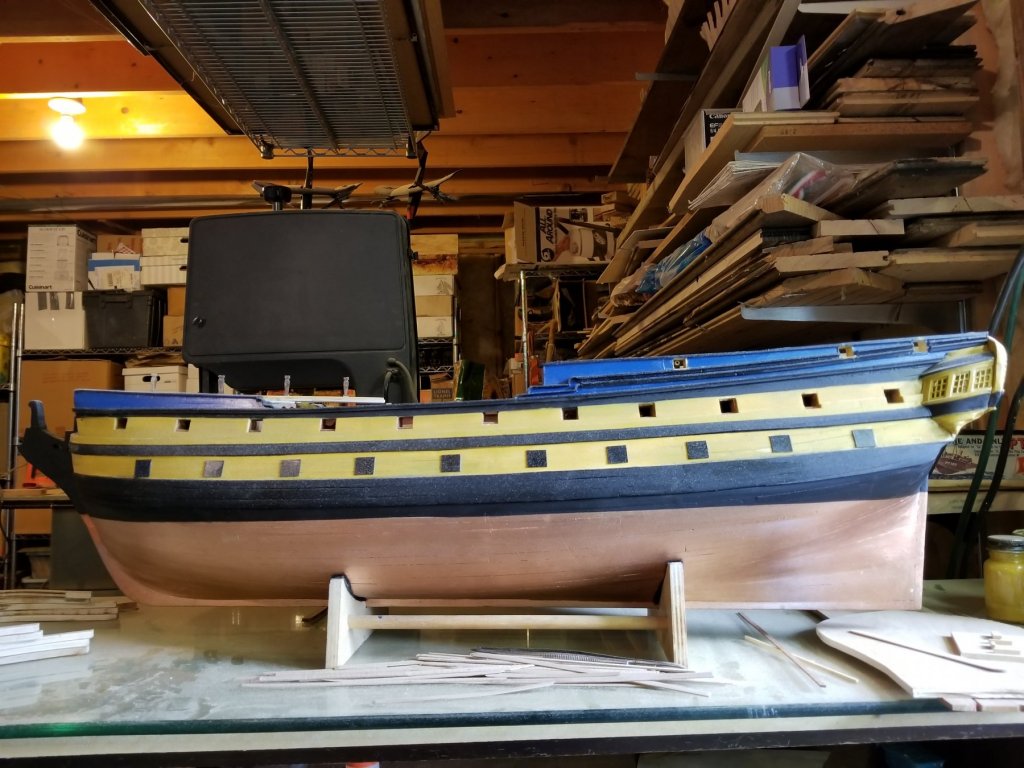
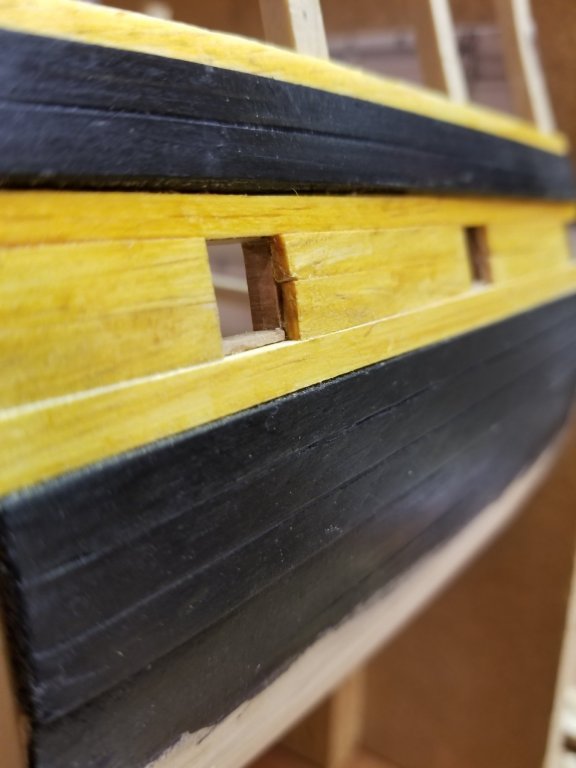
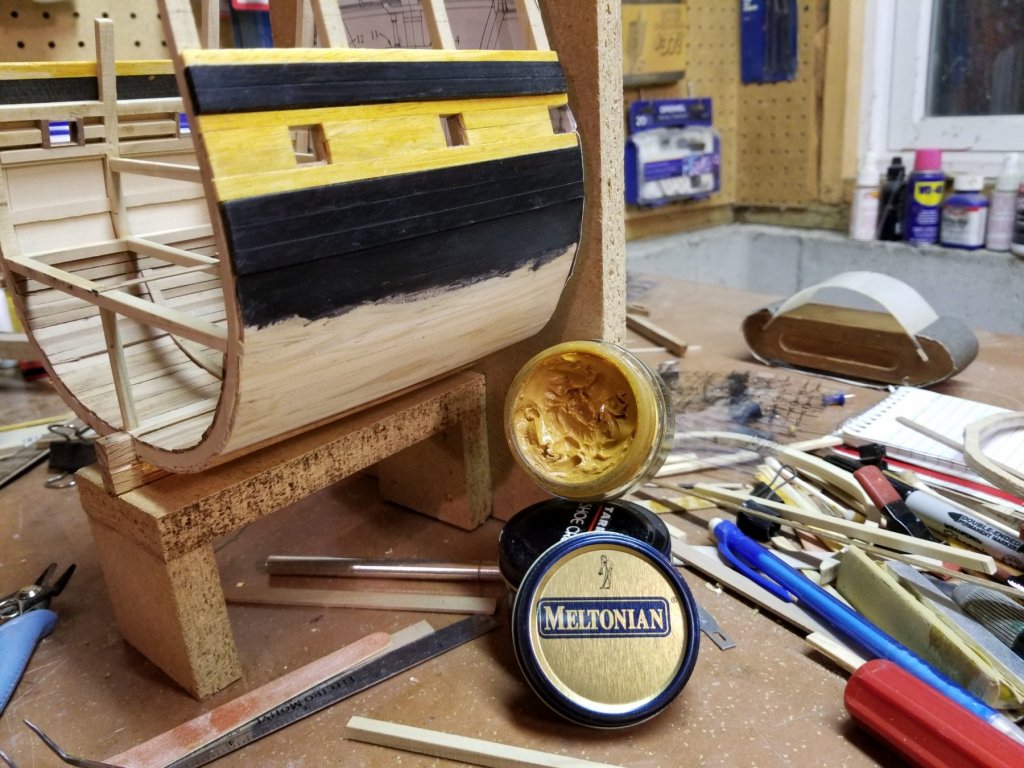
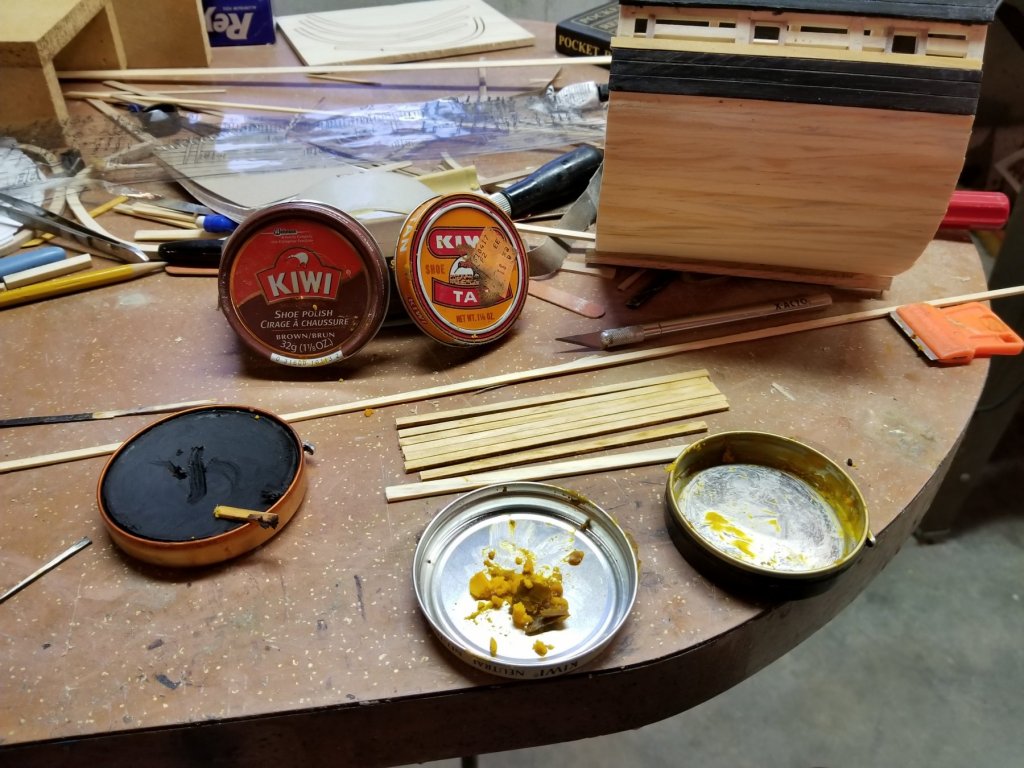
HMS ALERT 1777 by Qi Gang - Trident Model - 1/48 scale
in - Kit build logs for subjects built from 1751 - 1800
Posted · Edited by Serapis1779
Misspelled word
I apologize if my question is already answered, but what kind of wood is primarily being used in the hull framing?